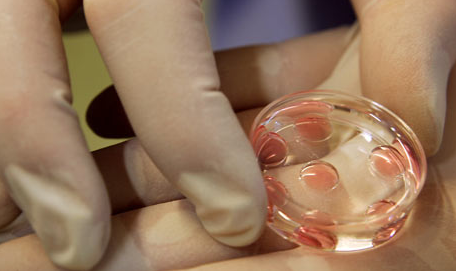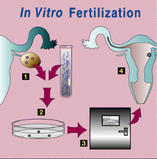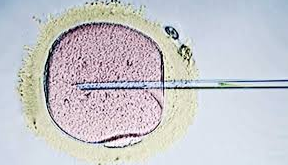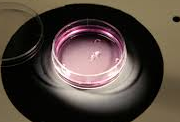Assisted Fertility and Epigenetic Disruption, with Marisa Bartolomei, PhD
"[E]ven though we are more informed about how to test drugs and chemicals, we still do not
necessarily know what these compounds are doing to our germline. And what about what happened
50 years ago when we were in utero or young and our germline was developing?"
|
Marisa S. Bartolomei, Ph.D, is Professor of Cell and Developmental Biology at University of Pennsylvania. Her lab focuses on the study of genomic imprinting and X inactivation in mice. While affecting only a subset of genes in mammals, genomic imprinting results in the unequal expression of the maternal and paternal alleles of a gene. As a consequence, the maternal and paternal genomes are functionally non-equivalent. Dysregulation of expression of these genes can resulted in deviations from normal development. Her lab has also examined the effects of various mutations and environmental perturbations on the inactivation of the X chromosome in females, which is another molecular process necessary for normal development.
Her lab is also investigating how the environment, including procedures used in Assisted Reproductive Technologies (ART) and endocrine disruptors, affect imprinting and epigenetic gene regulation. Interviewed by Jill Escher, November 2014 |
|
Dr. Bartolomei’s websites:
http://www.med.upenn.edu/apps/faculty/index.php/g20000320/p13534 http://irm.upenn.edu/bartolomei |
Your lab looks very closely at some of the minute molecular mechanisms in and around chromosomes that could have powerful impacts on development of offspring. Could you sum up the work you do?
Our main work centers on studying the molecular mechanisms that govern imprinted gene expression. Imprinted genes are found exclusively in mammals—they are expressed from only one of the two chromosomes that you inherit from your parents. There are a small number of them, about 100 in humans. They are also the reason that you require chromosomes from both your mother and your father in order to have normal development. Additionally, imprinted genes are critical for normal development with misexpression of these genes being responsible for a number of human imprinting disorders. We are interested in determining how and when imprints are put on genes during development, how imprints are maintained and how they are read so that appropriate expression patterns occur. We also study how imprints are perturbed under suboptimal environmental conditions. It’s my impression that genetic determinism remains a powerful paradigm influencing how we think about diseases and disorders, but we’re seeing that “heritability” is not just genetic, right? Could you speak to that at bit? Although most of the phenotypes we observe in mammals are encoded by genes, we now know that other nonmendelian effects are at work. For example, mammals have a small number of imprinted genes, each of which is expressed from one parental allele and silent on the other. Transmission of these genes through the germline causes them to be differentially marked (with DNA methylation or another epigenetic modification) and that causes this parental-specific expression. As such, other nonmendelian effects may be at work in early development. What are some of the exposures that could impair the laying down imprints on genes? We have found that pregnant mice exposed to various environmental conditions, such as estrogenic chemicals (BPA, for example), results in altered expression of imprinted genes. Such exposures may affect either the setting up of imprints and epigenetic information in oocytes or proper maintenance of imprints in the early embryo. With respect to assisted reproductive technology, could you explain the various exposures and manipulations in those procedures that could result in imprinting errors or epigenetic perturbations on gametes or the early embryo? Assisted reproductive technologies involve ovarian hyperstimulation to obtain more eggs from the female, exposure of IVF embryos to cell culture, altered oxygen conditions, stresses from manipulations such as pipetting and finally embryo transfer back to the recipient female. Any or all of these procedures have been suggested to be a source of harm to the embryo. So oxygen could be toxic to a human egg? The natural fallopian and uterine environment have low oxygen compared to laboratory air, I suppose? People have tried to do some estimates of the oxygen in oviducts, it’s a low oxygen environment. Some estimates are anywhere from 2 to 5% oxygen, and by contrast atmospheric oxygen we breathe is 20%. There’s evidence to suggest germ cells and early embryos need to be in hypoxic environment. In ICSI (intercytoplasmic sperm injection), an ovum is pierced by a tiny needle which inserts a single pipetted sperm. It seems only an inventor with a die-hard genetic-determist mindset could invent such a thing. What are the epigenomic or imprinting effects of ICSI? I guess I have a personal interest in this, knowing so many severely autistic kids who were conceived in this highly manipulated manner. First, it should be noted that ICSI helps couples to conceive if the male has a defect in his sperm that make normal fertilization or in vitro fertilization impossible. However, you could definitely argue that not only is there the possibility to transmit the mutation to sons but also, you have remove some of the selection that takes place during normal fertilization (whether in vivo or in vitro), in which one sperm will clearly out compete others and fertilize the egg more quickly. With respect to the process, no one has determined whether ICSI itself causes more adverse outcomes than IVF or some of the Assisted Reproductive technologies procedures associated with adverse outcomes in mouse experiments, such as ovarian hyperstimulation and embryo culture and transfer. I think that it is very important to test each procedure in Assisted Reproductive technologies to determine effects, which will ultimately help to develop strategies that neutralize any potential adverse outcome. You do work in X-chromosome inactivation. How could exposures affect this process, and in what windows of development of the gametes or embryo? Much less has been down with respect to X inactivation, although we did report a number of years ago that Xist was aberrantly expressed in male embryos derived from embryo culture and transfer. We are now looking into this question again in newer experiments. Autism researchers have been rooted in the idea that brain development starts in the embryo. But the more I learn about imprinting, I see that healthy, normal brain development begins with healthy, normally marked gametes. Do you agree? Every cell in an organism ultimately is derived from the germ cells, with epigenetic reprogramming an essential component of germ cell development. Also, there is extensively epigenetic reprogramming that occurs after fertilization. I believe that there is ample evidence to suggest that early insults can have consequences much later in life, such as in brain development. Therefore, the brain does not have to be present to be impacted. What about the effects of endocrine disruptors? When I first read the studies on gestational BPA exposure having developmental effects, I thought there's no way, development is more robust than that. So we went and tested BPA to see whether exposure of this endocrine disrupting chemical can alter DNA methylation of imprinted genes. We were surprised to see that some imprinted genes were in fact affected by BPA exposure early in development. The genes that we study, when over-expressed or under-expressed, result in different phenotypes. So they are very susceptible to changes in methylation. My colleagues and I are now looking into the second-generation effects of BPA and see a number of physiological phenotypic differences, including metabolism effects, insulin resistance. We are now trying to investigate underlying molecular phenotypes. And these were human-relevant doses of BPA? The exposures are similar to human exposure. We see phenotypes in the lower dose and the higher dose, including growth and weight and physiological phenotypes. What's interesting is the genes that are misregulated in our ART exposure studies are different from those in BPA-exposed mice, suggesting very different mechanisms. I don't really understand why, but the other remarkable findings are very clear placental phenotypes. So a lot of the misregulation of gene expression occurs in the placenta. We know imprinted genes and their proper expression are critical to normal placental development. What are the placenta effects? For ART, we see larger placenta to embryo weight ratio. For endocrine disruptors, we see smaller placenta to embryo ratios. With endocrine disruptors we see sexually dimorphic phenotypes. For the physiological effects, most of them are in the male. Again, this is all work in progress so we're still trying to understand that. Can I ask about methylation of the imprinted genes? How does a chromosome know if it's residing in the male or if it's residing in the female? Because these are sex-specific marks. I wonder if sex hormones are playing a role in those markings. Sadly, before Anne McLaren died, she was doing some of these switching experiments in the mouse where she would have a chromosomally male germ cell in a female gonad and vice versa, and trying to understand, especially at the level of imprints, what was programmed in the cells and what was environmental. Some of what she saw was programmed in the cells and responded to whether the cell was XX (female) or XY (male), but there was definitely also an environmental component, especially during female gametogenesis. She was just starting to really get some traction in these questions and then she tragically died in the car accident. She was one of the people who cared about germ cells and could manipulate them, and also was a fabulous geneticist. I agree with you, though, I don't think we really know as much as we would like to know of the relationship. I've always thought, "Well it must be all programmed in the cell as a result of the X and Y chromosomes." But if you put a germ cell in the opposite sex gonad and you can have some changes then you'd have to argue if you have super physiological doses of a hormone or drug or some other environmental component, that's got to impact it too. Nevertheless, there is a lot left to learn. I'm really interested in mechanisms, on one hand. On the other hand I wear a very pragmatic hat which says, my goodness, we know that germ cell specification, migration, proliferation and reprogramming is a very highly, evolutionary conserved process. It just seems common sense that the more we introduce novel chemical substances whether it be toxic cigarette smoke or synthetic hormones or drugs or plasticizers, that maybe these chemicals, some of which have very strong signaling functionality, may be toying with these very old processes that weren't really designed to deal with these signals. This is an important question. How much can you protect yourself living in a modern society where you're taking a drug you think is going to help you but later it turns out to be harmful for something else? Or what about new chemicals? We should definitely be minimizing risk and protect our germline. I think we're smarter now than we were 50 years ago when drugs were prescribed for everything, but we had little knowledge on how to investigate these drugs. Nevertheless, even though we are more informed about how to test drugs and chemicals, we still do not necessarily know what these compounds are doing to our germline. And what about what happened 50 years ago when we were in utero or young and our germline was developing? Among my concerns about toxicology is we're very much focused on immediate toxicity and this paradigm of long term effects and of germ cell effects, really is not commonly practiced or commonly accepted. Conventional toxicology is very limited. They think about cells in a dish, and think that is like human beings. We need more work in the animal, more physiological investigations and more multigenerational studies. And the long-term epigenetic effects. For example, I have plenty of friends who were DES daughters who have breast cancer. Well breast cancer wouldn't even enter into the mentality of conventional toxicology because that's something that happens 50 years after the exposure. How could that be an okay way to regulate drugs and chemicals? That's why I'm a big fan of placentas and following what's happening in the placenta because if you see abnormal placental histology, expression and epigenetics, I think that that's going to correlate with problems later on. More and more people are very convinced of the developmental origins of disease hypothesis, which is also known as the Barker hypothesis, which states that early adverse in utero exposures can have impacts much later in life. Your work is fascinating, thanks so much for talking with me today. Thank you, and good luck. |





